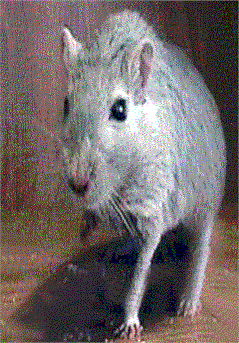
The Natural History of the Beerfordshire Marmite
The Marmite (Brownstickia Messonyasoles) ...
is a small, furry and somewhat reclusive inhabitant of the Lincolnshire Alps and the
higher reaches of the Norfolk Broads (above the tree line) 
although colonies can be found in areas (such as Beerfordbury Parva) where
dragons lairs are common.  There is some debate as to whether dragons deliberately introduce Marmite to
their locality or whether dragons only live in places populated by the Marmite
- and if so, whether there are common environmental triggers. Whatever, it is
clear that the unfortunate and innocent little Marmite is the Chicken Nugget
of the dragon world (and looks very similar after application of a puff or two
of dragon's breath).
There is some debate as to whether dragons deliberately introduce Marmite to
their locality or whether dragons only live in places populated by the Marmite
- and if so, whether there are common environmental triggers. Whatever, it is
clear that the unfortunate and innocent little Marmite is the Chicken Nugget
of the dragon world (and looks very similar after application of a puff or two
of dragon's breath).
Marmites are close relative of the Caledonian Haggis (Bownstickia Neepsanhootch) and share the laterally elevated limbset arrangement, whereby port and starboard pairs of legs are shorter and longer. This ensures a level body line when traversing mountain slopes. The result is an ubelievable turn of speed when running around mountains and provides fair protection against dragon strikes. Unlike the haggis, who insist on always being right, there are left- and right- handed strains of Marmite and evidence of some interbreeding although it is not currently understood how this is possible. Examples of marmite with different sized corner legs, athough uncommon, have been found and can be identified by a tendancey to spin quite fast when disturbed.
Hunting by man is traditional, and given the speed of the quarry, has been by gun and
net since the invention of gunpowder. In Norfolk the Punt Gun (see illus.) has  been developed for use in the
high lakes and this has been adapted for mountain terrain by the fitting of wheels. In
either case propulsion is by oar.
been developed for use in the
high lakes and this has been adapted for mountain terrain by the fitting of wheels. In
either case propulsion is by oar.  An added advantage to the
mountain gun is that the recoil propels the vehicle backwards round the mountain, allowing
the semi-automatic deployment of nets using centrifugal force. Harvested marmite (or their
component parts) fall into the nets from above, ready-blanched and fit for packing and
despatch to fast food frying ranges world-wide. The diagram below makes the process clear.
An added advantage to the
mountain gun is that the recoil propels the vehicle backwards round the mountain, allowing
the semi-automatic deployment of nets using centrifugal force. Harvested marmite (or their
component parts) fall into the nets from above, ready-blanched and fit for packing and
despatch to fast food frying ranges world-wide. The diagram below makes the process clear.